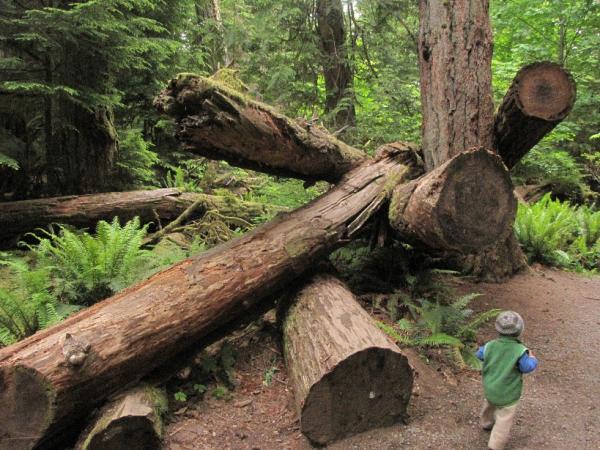
The call is on the youths. What's being done to limit the impact of human activities upon the earth? Is there going to be left a habitable place for posterity and generations to come? Will they have a better quality of life or do our activities threaten this idea?
Turn Down the Heat, a report by the World Bank examined some of these issues. It emphasized how human activities and the resultant global warming and climate change could impact adversely on nations. Beaming its spotlight on sub-Saharan Africa, South Asia, and South East Asia, the bank examined varying scenarios of what could become of these regions should world temperatures increase by 2 – 4 degrees. A synopsis; extreme flood, heat, and drought. These have enormous ripple effects such as population displacement and increased conflicts to name a few.
According to IEA, carbon emissions globally hit record highs in 2012, rising by 1.4 percent to 31.6 billion tons. In addition, developing countries are said to account for 60 percent of global emissions from energy as against 45 percent in the year 2000.
Is history going to repeat the same heated cycle? What is being done to stem the tide of a warming planet? There have been calls for an end to the use of fossil fuels, excessive deforestation, un-checked industrialization and much more.
The time has come for us to heed the call of knowledgeable diplomats and world leaders; United States President Barack Obama has called for reevaluations of current operating standards in order to safe guard the future from climate change.
The youths are a part of this conversation. As the leaders of tomorrow and the voters of today, they can catalyze positive action in their homes, schools and communities on habits that result in warming climates. Armed with appropriate facts on this issue, they can help make a world of difference. The World Bank President Jim Yong Kim stated that, "To deliver bold solutions on climate change, we need to listen to and engage broader and more diverse audiences. We need to hear the voices of young people."
The Connect4Climate global coalition, led by Lucia Grenna, threw its weight behind this idea, building global awareness and conversations on climate change. C4C took numerous steps to focus on encouraging youths to make their message heard. The youths have been a large part of coalition efforts, illuminating how climate change impacts their future in the recently concluded iChange competition.
In the United States, a poll conducted for the League of Conservation Voters revealed that young voters want there to be more action in slowing climate change. According to Tree Hugger.com, "young voters will not tolerate denying science or opposing action to slow climate change."
In addition, AllAfrica.com presents how the youths currently focus on grassroots action in a bid to help their communities adapt to climate change. They believe that there's an urgency to develop resilience measures and coping strategies since adaptation funds were not trickling down to those in desperate need.
What more needs to be said? Let these steps taken so far be transformed into leaps and bounds of progress, through positive and profound actions and policies that will reverse the heat.
The World Bank in its fight to end poverty attempts to balance varying activities that alleviate poverty with those that protect the environment. According to Reuters, the World Bank in is endeavoring to limit the financing of coal-fired power plants.
Other countries and cities around the world are snapping on to the efforts of limiting climate change. For instance, London has put together a city adaptation plan that includes surface water flood management, increasing vegetation about the city, and improving water and energy efficiency in homes. In Quito, Ecuador, official policies support mitigation and adaptation strategies that focus on five areas: ecosystems and biodiversity, drinking water supplies, public health, infrastructure and power production, and climate risk management.
New York City has developed a 19.5 billion dollar plan that will help the city adapt to climate change. A sort of reinforcement after the extensive damage wrought on the city by superstorm Sandy.
In Jamaica, collaboration by the University of West Indies, the Global Environment Facility, and United Nations Environment Program will see the construction of zero – energy buildings in the region in the next two to three years. These zero-energy / energy – plus buildings (ZEB / EB) work by combining energy-efficient designs with efficient sources of energy so that they produce their own energy, and then some.
Nigeria collaborates with ECOWAS member states to develop a West African Climate Change Adaptation Strategy (WACCAS), in addition to afforestation initiatives, the Green Wall Sahara Initiative, the construction of solar farms, and public awareness campaigns.
In Durban, South Africa climate adaptation strategies started as early as 2004 and have been rolling out in stages. The program began by assessing local impacts of climate change as presented by hotter temperatures, rainfall intensity and coastal erosion. Specific adaptation plans were developed with hopes of harnessing these effects.
Rwanda is planting trees, preserving forests, and reforming agricultural practices to make them more environmentally friendly.
The Massachusetts Institute of Technology estimates that 20 percent of cities around the globe have developed adaptation strategies. We all need to adopt activities that will help harness climate change and decrease escalating global temperatures.
A lot more needs to be done to decelerate the warming of the earth. The UN secretary general, Ban Ki Moon added his voice to the call on the youths' increased involvement.
As President Obama said in his recent remarks on climate change, when "our children and our children's children …look us in the eye and ask us, did we do all that we could when we had the chance to deal with this problem and leave them a cleaner, safer, more stable world?" Let us be able to respond, "Yes, we did!"



